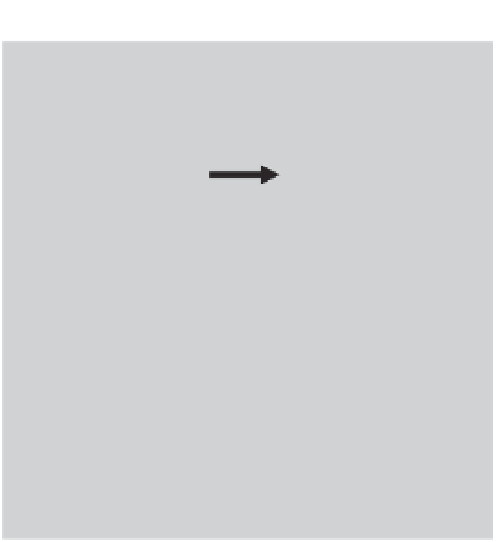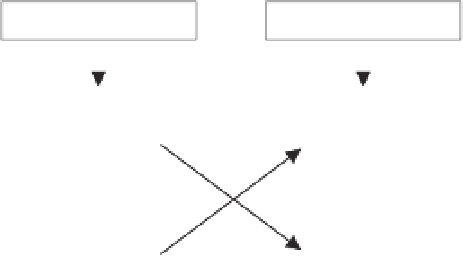Environmental Engineering Reference
In-Depth Information
erably; regions with a calcareous geology are not sensi-
tive to acidifi cation.
Acidifi cation causes marked biotic changes in com-
munities of lake organisms. Shifts in the competitive
relationships of the algae or the disappearance of
key-
stone species
can alter community structure (Eriks-
son
et al
. 1980 ). When acidifi ed, the solubility of many
metals (aluminium, iron, copper, zinc, nickel, lead and
cadmium) in water increases, but that of some other
metals (mercury and vanadium) decreases. Adverse
effects on organisms are invariably attributed to the
increased solubility of aluminium and its shift to the
toxic Al
3++
form, which on its increased mobilization
also causes precipitation of P and humic substances.
The decreased availability of PO
4
-P thus leads to a
decreased phytoplankton production. Such acid lakes
tend to become oligotrophic.
Ecosystem processes
such as ion regulation,
osmoregulation, acid-base balance, nitrogen excretion
and respiration are adversely affected by an increase in
acidity (Steinberg & Wright 1994). Great damage to
fi sh populations in lakes in Scandinavia has occurred
already from the 1960s to the late 1980s (Henriksen
et al
. 1989). In Norwegian lakes, Atlantic salmon
(
Salmo salar
) was wiped out in the early 1900s and
brown trout (
Salmo trutta
) had already disappeared in
mountain lakes as early as the 1920s and 1930s. In
Finland, roach (
Rutilus rutilus
) disappeared from many
bodies of water in the 1980s. Hardy species like white-
fi sh (
Coregonus peled
) and perch (
Perca fl uviatilis
) expe-
rienced high mortality of eggs. Similar harmful effects
on fi sh populations are reported from eastern prov-
inces of Canada. In conclusion, acidifi cation leads to
periodic mortality of fi sh during the early stages of
development and growth and causes populations to
decrease and disappear.
Social aspects
Technological inputs
Nature of water use
(aquatic ecosystems)
RESTORATION
MEASURES
Problems
Scientific studies
Public awareness
Funding
Politics and economy
Figure 18.3
Strategic principles of lake restoration.
The choice of restoration measures will depend on both
direct and indirect factors related to the nature of water
use, problems relating to water quality, and scientifi c
studies (thick arrows). (From Gulati 1989; see also
Vollenweider 1987 .)
that is, the nature of water use, and public awareness
of the problems on the one hand, and funding, scien-
tifi c knowledge and desirable restoration measures on
the other (Figure 18.3). Most lake restoration tech-
niques are directed at reducing external P inputs (e.g.
papers in Ryding & Rast 1989; Cooke
et al
. 2005 ), and
they can be divided into two main types, namely, exter-
nal and in-lake control measures (Figure 18.4). Exter-
nal measures focus on diverting sewage and wastewater
inputs intended to prevent nutrient-rich inputs into the
lake or reservoir (section 18.3.1). The in-lake measures
are designed to decrease internal P loading (P released
from retention in lake sediments) by various physico-
chemical means, biomanipulation of the lake's food
web structure and functioning, or both (section
18.3.2). In section 18.3.3 we refer briefl y to a few other
science-based measures of lake rehabilitation.
18.3
LAKE RESTORATION MEASURES
Building on applied research programmes, manage-
ment and restoration technologies for lakes and
resevoirs developed rapidly during the 1980s in the
United States, Canada and Europe, especially in the
Netherlands and Denmark, but also in Germany and
the United Kingdom (Moss
et al
. 1996 ). The restoration
and management measures applied depend on users'
interests (i.e. the economic and recreational uses of the
body of water in question). Lake restoration strategies
combine the social aspects and available technology,
18.3.1
Reduction of external nutrient loads
During the 1970s-1980s, both in western Europe and
in North America, tertiary treatment of sewage and













